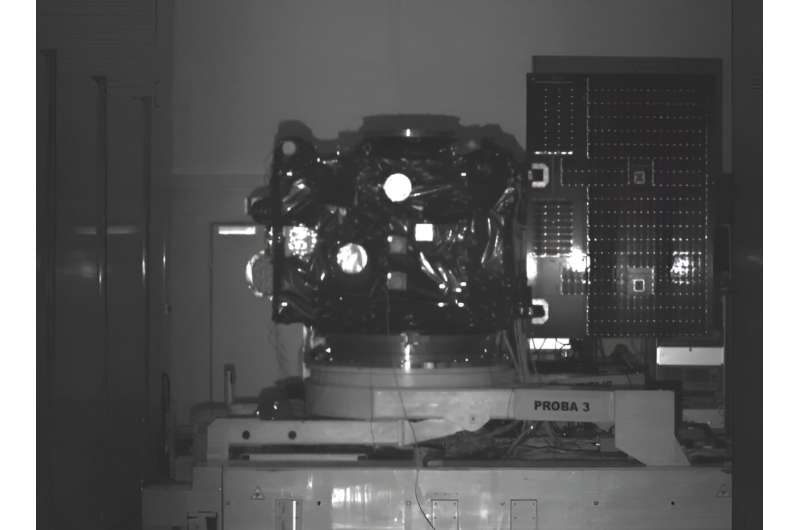
One of the precision formation flying Proba-3 satellites as seen from the other during ground testing. The pair will fly in orbit relative to one another down to millimeter scale precision, but in order to do this must keep continuous track of each other in both sunlight and darkness.
To achieve this, Proba-3 combines vision-based detection, as tested here, with radio frequency links, satellite navigation and laser ranging.
The Visual-Based Sensor will be used when the satellites are closer than 250 m to each other. LEDs aboard Proba-3’s Coronagraph satellite—seen in the animation below—will be detected by a set of cameras on the other Occulter satellite, appearing as pattens of light in the dark.
Finally, for maximum precision, the Occulter will shine a laser at a retro-reflector mounted on the Coronagraph satellite.
Proba-3 will demonstrate formation flying in the context of a large-scale science experiment. The two satellites will together form a 144-m long solar coronagraph to study the sun’s faint corona closer to the solar rim than has ever before been achieved. The aim is to operate as if the pair are part of a single giant spacecraft in orbit.
Provided by
European Space Agency
Proba-3 satellite: Seeing in the dark (2023, August 25)
retrieved 27 September 2023
from https://phys.org/news/2023-08-proba-satellite-dark.html
part may be reproduced without the written permission. The content is provided for information purposes only.